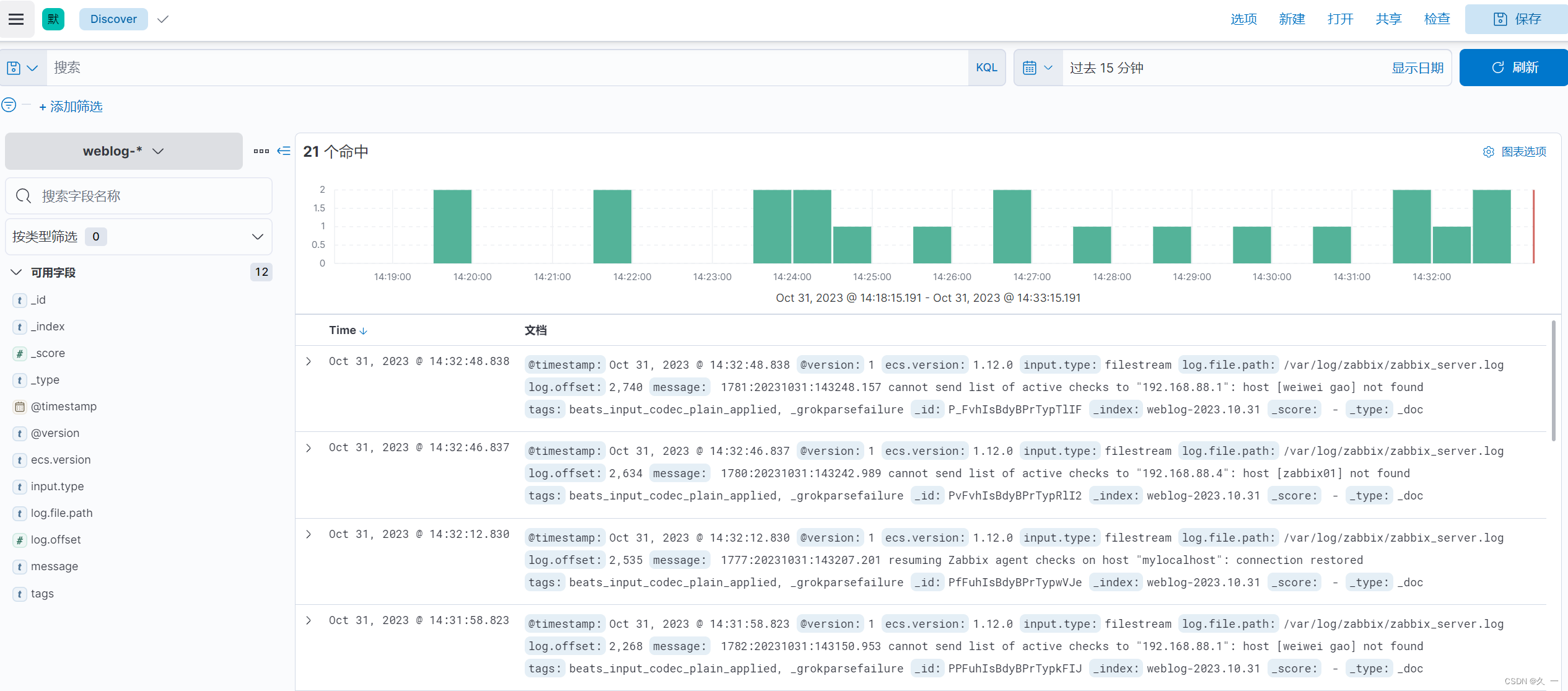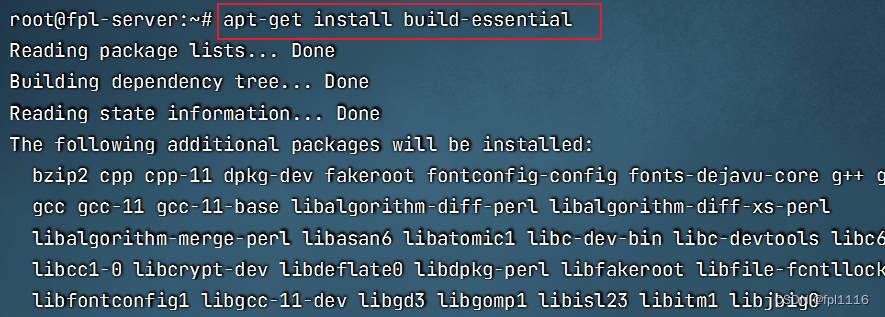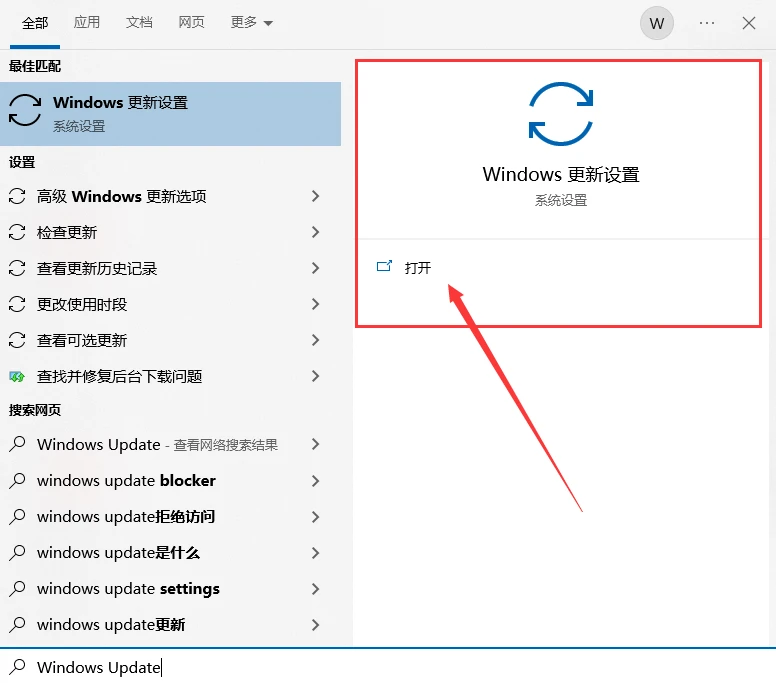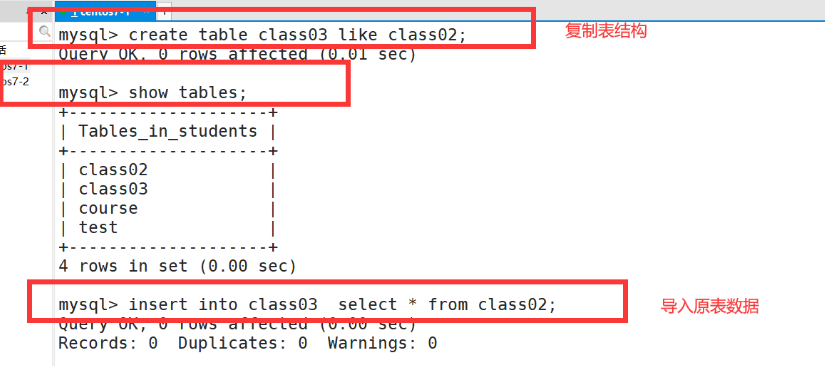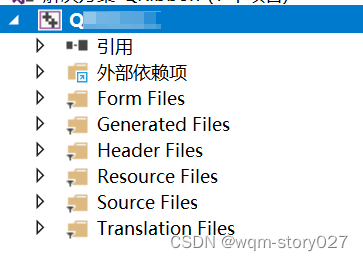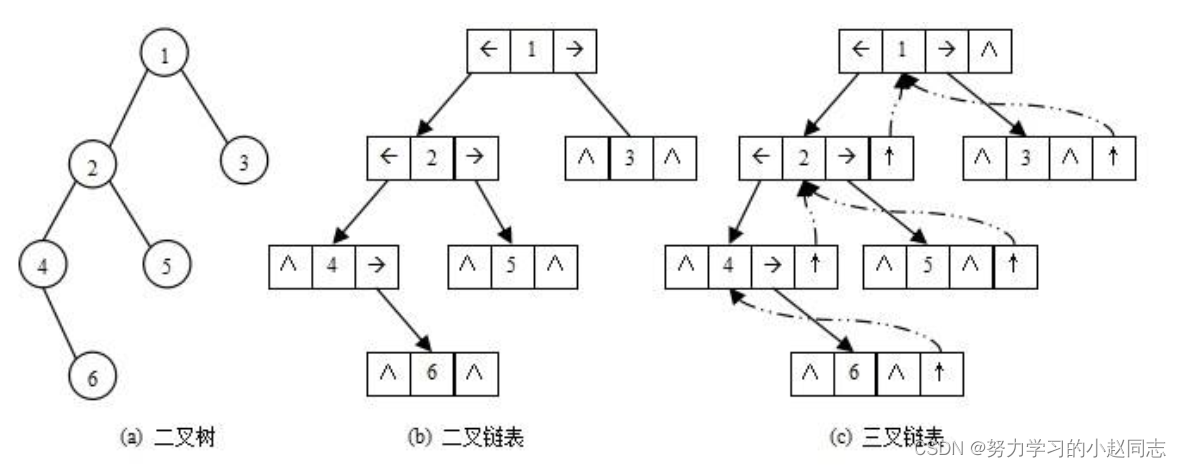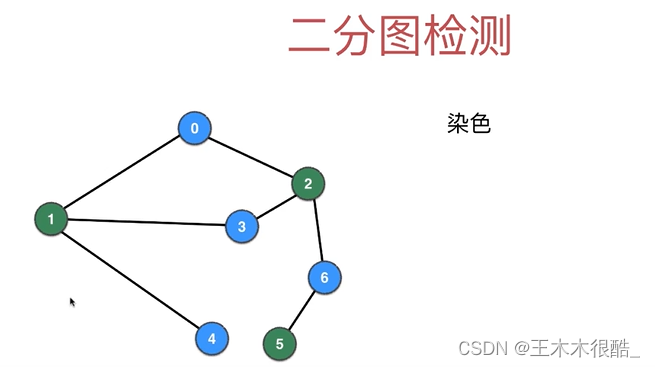项目代码
https://github.com/yinhai1114/Java_Learning_Code/tree/main/IDEA_Chapter13/src/com/yinhai/wrapper_/math_
https://github.com/yinhai1114/Java_Learning_Code/tree/main/IDEA_Chapter13/src/com/yinhai/wrapper_/array_
https://github.com/yinhai1114/Java_Learning_Code/tree/main/IDEA_Chapter13/src/com/yinhai/wrapper_/system_
https://github.com/yinhai1114/Java_Learning_Code/tree/main/IDEA_Chapter13/src/com/yinhai/wrapper_/bignum_
Math类
一、基本介绍
Math类包含用于执行基本数学运算的方法,如初等指数、对数、平方根和三角函数。
二、常用方法
public class MathMethod {public static void main(String[] args) {//看看Math常用的方法(静态方法)//1.abs 绝对值int abs = Math.abs(-9);System.out.println(abs);//9//2.pow 求幂double pow = Math.pow(2, 4);//2的4次方System.out.println(pow);//16//3.ceil 向上取整,返回>=该参数的最大整数(转成double);double ceil = Math.ceil(3.9);System.out.println(ceil);//4.0//4.floor 向下取整,返回<=该参数的最小整数(转成double)double floor = Math.floor(4.001);System.out.println(floor);//4.0//5.round 四舍五入 Math.floor(该参数+0.5)long round = Math.round(5.51);System.out.println(round);//6//6.sqrt 求开方double sqrt = Math.sqrt(9.0);System.out.println(sqrt);//3.0//7.random 求随机数// random 返回的是 0 <= x < 1 之间的一个随机小数// 思考:请写出获取 a-b之间的一个随机整数,a,b均为整数 ,比如 a = 2, b=7// 即返回一个数 x 2 <= x <= 7// 老韩解读 Math.random() * (b-a) 返回的就是 0 <= 数 <= b-a// (1) (int)(a) <= x <= (int)(a + Math.random() * (b-a +1) )// (2) 使用具体的数给小伙伴介绍 a = 2 b = 7// (int)(a + Math.random() * (b-a +1) ) = (int)( 2 + Math.random()*6)// Math.random()*6 返回的是 0 <= x < 6 小数// 2 + Math.random()*6 返回的就是 2<= x < 8 小数// (int)(2 + Math.random()*6) = 2 <= x <= 7// (3) 公式就是 (int)(a + Math.random() * (b-a +1) )for(int i = 0; i < 100; i++) {System.out.println((int)(2 + Math.random() * (7 - 2 + 1)));}//max , min 返回最大值和最小值int min = Math.min(1, 9);int max = Math.max(45, 90);System.out.println("min=" + min);System.out.println("max=" + max);}
}Arrays类
一、基本介绍
Arrays里面包含了一系列静态方法,用于管理或操作数组(比如排序和搜索)。
1.toString返回数组的字符串形式Arrays.toString(arr)
2.sort排序(自然排序和定制排序)Integer arr[ = {1,-1, 7. 0, 89};
3. binarySearch通过二分搜索法进行查找,要求必须排好序int index = Arrays.binarySearch(arr, 3);
2.Arrays方法(建议多看看排序方法)
1)基本用法
public class ArraysMethod01 {public static void main(String[] args) {Integer[] integers = {1, 20, 90};//遍历数组for (int i = 0; i < integers.length; i++) {System.out.println(integers[i]);}//直接使用Arrays.toString方法,显示数组System.out.println(Arrays.toString(integers));//演示 sort方法的使用Integer arr[] = {1, -1, 7, 0, 89};//进行排序//1. 可以直接使用冒泡排序 , 也可以直接使用Arrays提供的sort方法排序//2. 因为数组是引用类型,所以通过sort排序后,会直接影响到 实参 arr//Arrays.sort(arr); // 默认排序方法System.out.println("===排序后===");System.out.println(Arrays.toString(arr));//3. sort重载的,也可以通过传入一个接口 Comparator 实现定制排序//4. 调用 定制排序 时,传入两个参数 (1) 排序的数组 arr// (2) 实现了Comparator接口的匿名内部类 , 要求实现 compare方法Arrays.sort(arr, new Comparator() {@Overridepublic int compare(Object o1, Object o2) {//5. 这里体现了接口编程的方式 , 看看源码,就明白Integer i1 = (Integer) o1;Integer i2 = (Integer) o2;return i2 - i1;}});// 源码分析//(1) Arrays.sort(arr, new Comparator()//(2) 最终到 TimSort类的// private static <T> void binarySort(T[] a, int lo, int hi, int start,Comparator<? super T> c)()//(3) 执行到 binarySort方法的代码, 会根据动态绑定机制 c.compare()执行我们传入的匿名内部类的 compare ()// while (left < right) {// int mid = (left + right) >>> 1;// if (c.compare(pivot, a[mid]) < 0)// right = mid;// else// left = mid + 1;// }//(4) new Comparator() {// @Override// public int compare(Object o1, Object o2) {// Integer i1 = (Integer) o1;// Integer i2 = (Integer) o2;// return i2 - i1;// }// }//(5) public int compare(Object o1, Object o2) 返回的值>0 还是 <0// 会影响整个排序结果, 这就充分体现了 接口编程+动态绑定+匿名内部类的综合使用将来的底层框架和源码的使用方式,会非常常见System.out.println("===排序后===");System.out.println(Arrays.toString(arr));//}
}
2)手写模拟Arrays定制排序的处理
public class ArraysSortCustom {public static void main(String[] args) {int[] arr = {1, -1, 8, 0, 20};// bubble01(arr);// System.out.println("==排序后的情况==");// System.out.println(Arrays.toString(arr));bubble02(arr, new Comparator() {@Overridepublic int compare(Object o1, Object o2) {//arr[j] arr[j+1]传入这里int i1 = (Integer) o1;//拆箱int i2 = (Integer) o2;//拆箱return i2 - i1;// 判断我们的逻辑是小到大(i1 - i2 > 0)执行排序还是大到小(i2 - i1 > 0)执行排序;}});System.out.println("==定制排序后的情况==");System.out.println(Arrays.toString(arr));}//1.使用冒泡完成排序public static void bubble01(int[] arr) {int temp = 0;for (int i = 0; i < arr.length - 1; i++) {for (int j = 0; j < arr.length - 1 - i; j++) {//从小到大if (arr[j] > arr[j + 1]) {temp = arr[j];arr[j] = arr[j + 1];arr[j + 1] = temp;}}}}//结合冒泡 + 定制public static void bubble02(int[] arr, Comparator c) {int temp = 0;for (int i = 0; i < arr.length - 1; i++) {for (int j = 0; j < arr.length - 1 - i; j++) {//数组排序由 c.compare(arr[j], arr[j + 1])返回的值决定if (c.compare(arr[j], arr[j + 1]) > 0) {temp = arr[j];arr[j] = arr[j + 1];arr[j + 1] = temp;}}}}
}3.其他方法
1.binarySearch 通过二分搜索法进行查找,要求必须排好
//1. 使用 binarySearch 二叉查找
//2. 要求该数组是有序的. 如果该数组是无序的,不能使用binarySearch
int index = Arrays.binarySearch(arr, 167);
System.out.println("index=" + index);
//3. 如果数组中不存在该元素,就返回 return -(low + 1); // key not found.
//low指的是搜索的值应该在的值,比如167就是 -(5 + 1),如果是3就是-(2 + 1)2.copyOf 数组元素的复制拷贝
//1. 从 arr 数组中,拷贝 arr.length个元素到 newArr数组中
//2. 如果拷贝的长度 > arr.length 就在新数组的后面 增加 null
Integer[] newArr = Arrays.copyOf(arr, arr.length);
System.out.println("==拷贝执行完毕后==");
System.out.println(Arrays.toString(newArr));
//3. 如果拷贝长度 < 0 就抛出异常NegativeArraySizeException
//4. 该方法的底层使用的是 System.arraycopy()
3.fill 数组元素的填充
Integer[] num = new Integer[]{9,3,2};
//1. 使用 99 去填充 num数组,可以理解成是替换原理的元素
Arrays.fill(num, 99);
System.out.println("==num数组填充后==");
System.out.println(Arrays.toString(num));//equals 比较两个数组元素内容是否完全一致
Integer[] arr2 = {1, 2, 90, 123};
//1. 如果arr 和 arr2 数组的元素一样,则方法true;
//2. 如果不是完全一样,就返回 false
boolean equals = Arrays.equals(arr, arr2);
System.out.println("equals=" + equals);4.asList 将一组值,转换成list
//1. asList方法,会将 (2,3,4,5,6,1)数据转成一个List集合
List asList = Arrays.asList(2,3,4,5,6,1);
System.out.println("asList=" + asList);
System.out.println("asList的运行类型" + asList.getClass());
//2. 返回的 asList 编译类型 List(接口)
//3. asList 运行类型 java.util.Arrays#ArrayList, 是Arrays类的
// 静态内部类 private static class ArrayList<E> extends AbstractList<E>
// implements RandomAccess, java.io.Serializable
}
public class ArraysMethod02 {public static void main(String[] args) {Integer[] arr = {1, 2, 90, 123, 160};// binarySearch 通过二分搜索法进行查找,要求必须排好//1. 使用 binarySearch 二叉查找//2. 要求该数组是有序的. 如果该数组是无序的,不能使用binarySearchint index = Arrays.binarySearch(arr, 167);System.out.println("index=" + index);//3. 如果数组中不存在该元素,就返回 return -(low + 1); // key not found.//low指的是搜索的值应该在的值,比如167就是 -(5 + 1),如果是3就是-(2 + 1)//copyOf 数组元素的复制拷贝//1. 从 arr 数组中,拷贝 arr.length个元素到 newArr数组中//2. 如果拷贝的长度 > arr.length 就在新数组的后面 增加 nullInteger[] newArr = Arrays.copyOf(arr, arr.length);System.out.println("==拷贝执行完毕后==");System.out.println(Arrays.toString(newArr));//3. 如果拷贝长度 < 0 就抛出异常NegativeArraySizeException//4. 该方法的底层使用的是 System.arraycopy()//ill 数组元素的填充Integer[] num = new Integer[]{9,3,2};//1. 使用 99 去填充 num数组,可以理解成是替换原理的元素Arrays.fill(num, 99);System.out.println("==num数组填充后==");System.out.println(Arrays.toString(num));//equals 比较两个数组元素内容是否完全一致Integer[] arr2 = {1, 2, 90, 123};//1. 如果arr 和 arr2 数组的元素一样,则方法true;//2. 如果不是完全一样,就返回 falseboolean equals = Arrays.equals(arr, arr2);System.out.println("equals=" + equals);//asList 将一组值,转换成list//1. asList方法,会将 (2,3,4,5,6,1)数据转成一个List集合List asList = Arrays.asList(2,3,4,5,6,1);System.out.println("asList=" + asList);System.out.println("asList的运行类型" + asList.getClass());//2. 返回的 asList 编译类型 List(接口)//3. asList 运行类型 java.util.Arrays#ArrayList, 是Arrays类的// 静态内部类 private static class ArrayList<E> extends AbstractList<E>// implements RandomAccess, java.io.Serializable}
}二、练习(也可以多看看这个)

public class ArraysExercise {public static void main(String[] args) {/*案例:自定义Book类,里面包含name和price,按price排序(从大到小)。要求使用两种方式排序 , 有一个 Book[] books = 4本书对象.使用前面学习过的传递 实现Comparator接口匿名内部类,也称为定制排序。[同学们完成这个即可 10min ],可以按照 price (1)从大到小 (2)从小到大 (3) 按照书名长度从大到小*/Book[] books = new Book[4];books[0] = new Book("红楼梦", 100);books[1] = new Book("金瓶梅新", 90);books[2] = new Book("青年文摘20年", 5);books[3] = new Book("java从入门到放弃~", 300);arrCustom(books, new Comparator() {@Overridepublic int compare(Object o1, Object o2) {Book book1 = (Book)o1;Book book2 = (Book)o2;int temp =(int)(book1.getPrice() - book2.getPrice());return temp;}});System.out.println(Arrays.toString(books));arrCustom(books, new Comparator() {@Overridepublic int compare(Object o1, Object o2) {Book book1 = (Book)o1;Book book2 = (Book)o2;int temp =(int)(book1.getPrice() - book2.getPrice());return -temp;}});System.out.println(Arrays.toString(books));arrMintoMax(books);System.out.println(Arrays.toString(books));arrMaxtoMin(books);System.out.println(Arrays.toString(books));arrNameLength(books);System.out.println(Arrays.toString(books));}public static void arrMaxtoMin(Book[] books){//记得是引用赋值,改变这个books main方法内的也会改变//price从大到小Book temp;for (int i = 0; i < books.length - 1; i++) {for (int j = 0; j <books.length - i - 1; j++) {if(books[j].getPrice() < books[j + 1].getPrice()){temp = books[j];books[j] = books[j + 1];books[j + 1] = temp;}}}}public static void arrMintoMax(Book[] books){//price从小到大Book temp;for (int i = 0; i < books.length - 1; i++) {for (int j = 0; j < books.length - i - 1; j++) {if(books[j].getPrice() > books[j + 1].getPrice()){temp = books[j];books[j] = books[j + 1];books[j + 1] = temp;}}}}public static void arrCustom(Book[] books,Comparator c){//定制Book temp;for (int i = 0; i < books.length - 1; i++) {for (int j = 0; j < books.length - i - 1; j++) {if(c.compare(books[j],books[j + 1]) > 0){temp = books[j];books[j] = books[j + 1];books[j + 1] = temp;}}}}public static void arrNameLength(Book[] books){//书名长度从大到小Book temp;for (int i = 0; i < books.length - 1; i++) {for (int j = 0; j < books.length - i - 1; j++) {if(books[j].getName().length() < books[j + 1].getName().length()){temp = books[j];books[j] = books[j + 1];books[j + 1] = temp;}}}}
}class Book {private String name;private double price;public Book(String name, double price) {this.name = name;this.price = price;}public String getName() {return name;}public void setName(String name) {this.name = name;}public double getPrice() {return price;}public void setPrice(double price) {this.price = price;}@Overridepublic String toString() {return "Book{" +"name='" + name + '\'' +", price=" + price +'}';}
} 
System类
一、常用方法
1) exit退出当前程序
2) arraycopy :复制数组元素,比较适合底层调用,一般使用Arrays.copyOf完成复制数组
int[] src={1,2,3};
int[] dest = new int[3];
System.arraycopy(src, 0, dest, 0, 3);
3) currentTimeMillens:返回当前时间距离1970-1-1的毫秒数
4) gc:运行垃圾回收机制System.gc;
public class System_ {public static void main(String[] args) {//exit 退出当前程序System.out.println("ok1");//1. exit(0) 表示程序退出//2. 0 表示一个状态// System.exit(0);System.out.println("ok2");//arraycopy :复制数组元素,比较适合底层调用,// 一般使用Arrays.copyOf完成复制数组int[] src={1,2,3};int[] dest = new int[3];// dest 当前是 {0,0,0}//1. 主要是搞清楚这五个参数的含义//2. * @param src the source array. src为源数组// * @param srcPos starting position in the source array.// srcPos: 从源数组的哪个索引位置开始拷贝// * @param dest the destination array.// dest : 目标数组,即把源数组的数据拷贝到哪个数组// * @param destPos starting position in the destination data.// destPos: 把源数组的数据拷贝到 目标数组的哪个索引// * @param length the number of array elements to be copied.// length: 从源数组拷贝多少个数据到目标数组System.arraycopy(src, 0, dest, 0, src.length);// int[] src={1,2,3};System.out.println("dest=" + Arrays.toString(dest));//[1, 2, 3]//currentTimeMillens:返回当前时间距离1970-1-1 的毫秒数System.out.println(System.currentTimeMillis());}
}BigInteger和BigDecimal类
一、基本介绍
1. BigInteger适合保存比较大的整型
1. 在对 BigInteger 进行加减乘除的时候,需要使用对应的方法,不能直接进行 + - * /
2. 可以创建一个 要操作的 BigInteger 然后进行相应操作
public class BigInteger_ {public static void main(String[] args) {//当我们编程中,需要处理很大的整数,long 不够用// long l = 23788888899999999999999999999l;// System.out.println("l=" + l);//可以使用BigInteger的类来搞定BigInteger bigInteger = new BigInteger("23788888899999999999999999999");//用字符串BigInteger bigInteger2 = new BigInteger("10099999999999999999999999999999999999999999999999999999999999999999999999999999999");//本质上是对字符串进行操作System.out.println(bigInteger);System.out.println(bigInteger);//1. 在对 BigInteger 进行加减乘除的时候,需要使用对应的方法,不能直接进行 + - * ///System.out.println(bigInteger + 1);//报错//2. 可以创建一个 要操作的 BigInteger 然后进行相应操作BigInteger add = bigInteger.add(bigInteger2);System.out.println(add);//BigInteger subtract = bigInteger.subtract(bigInteger2);System.out.println(subtract);//减BigInteger multiply = bigInteger.multiply(bigInteger2);System.out.println(multiply);//乘BigInteger divide = bigInteger.divide(bigInteger2);System.out.println(divide);//除}
}
2. BigDecimal适合保存精度更高的浮点型(小数)
1. 如果对 BigDecimal进行运算,比如加减乘除,需要使用对应的方法
2. 创建一个需要操作的 BigDecimal 然后调用相应的方法即可
3.System.out.println(bigDecimal.divide(bigDecimal2));//可能抛出异常ArithmeticException无限循环小数,会抛出异常
4.在调用divide 方法时,指定精度即可. BigDecimal.ROUND_CEILING
5.如果有无限循环小数,就会保留 分子 的精度
public class BigDecimal_ {public static void main(String[] args) {//当我们需要保存一个精度很高的数时,double 不够用//可以是 BigDecimal//double d = 1999.11111111111999999999999977788d;//System.out.println(d);BigDecimal bigDecimal = new BigDecimal("1999.11");BigDecimal bigDecimal2 = new BigDecimal("3");System.out.println(bigDecimal);//1. 如果对 BigDecimal进行运算,比如加减乘除,需要使用对应的方法//2. 创建一个需要操作的 BigDecimal 然后调用相应的方法即可System.out.println(bigDecimal.add(bigDecimal2));//加System.out.println(bigDecimal.subtract(bigDecimal2));//减System.out.println(bigDecimal.multiply(bigDecimal2));//乘//System.out.println(bigDecimal.divide(bigDecimal2));//可能抛出异常ArithmeticException//可能是无限循环小数,会抛出异常//在调用divide 方法时,指定精度即可. BigDecimal.ROUND_CEILINGSystem.out.println(bigDecimal.divide(bigDecimal2, BigDecimal.ROUND_CEILING));//如果有无限循环小数,就会保留 分子 的精度}
}



